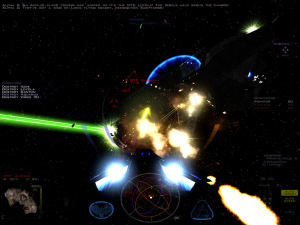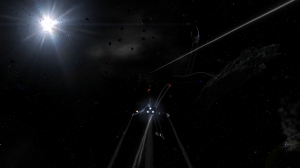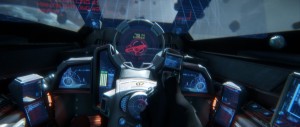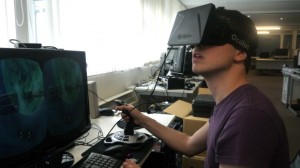The rise, fall, and rebirth of the Combat Space Sim
Sometimes, I pine for my gaming glory days and the combat space sims that went with them. When this nostalgia hits, I can only scratch the itch by dusting off my old flight stick, plug it in, (…endlessly calibrate it) and jump into the cockpit of my trusty X-Wing, speedy GTF Perseus, or frail yet fast TIE Interceptor.
The Rise
In the early 90s, the combat space sim’s were all the rage! X-Wing and Wing Commander really launched the genre into what it became – open space with starfighters and lasers zipping along the hulls of the massive starships lumbering across the void. Looking back on them now, the graphics are blocky, and the combat can be a bit slow. But at the time, it was almost like being a fighter pilot in outer-space…minus the attention to physics and the lack of sound in a vacuum.
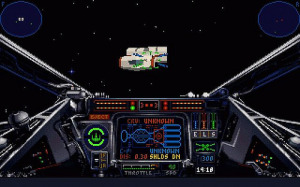
Xwing – one of the definitive space sims
As the technology improved, so too did the games. TIE Fighter was released in 1994, putting you in the boots of an Imperial pilot. The game was well received, and was awarded “Best Game of the Year” by Strategy Plus. The Wing Commander series also went from strength to strength in the early 90s, and Wing Commander III featured the first full motion video cutscenes in a computer game. They even got Mark Hamill and John Rhys-Davies to star in it.
In the mid to late 90s, many studios were releasing their own takes on the combat space simulator genre. One particular studio stood out from the rest – Volition. They released Freespace: The Great War in 1998, and followed up with what is considered one of the greatest space sims in 1999. Freespace 2.
Freespace 2’s graphics, story, sound, and multiplayer were so ground breaking that the game itself can still hold its own today, 15 years after initial release. The player community behind Freespace 2 was given access to the source code when it was released by Volition, and have modded it consistently, keeping it graphically up-to-date since. One particular group of talented individuals managed to replicate the world of the Re-imagined Battlestar Galactica, in a freeware game called Diaspora.
The Fall
Despite this loyalty to Freespace in particular, but also to the combat space sim genre as a whole by many gamers, the rise of the console marked the beginning of a major drought in decent releases. 1999 saw the release of X-wing Alliance, the last of the PC Star Wars space sims, and the collapse of Interplay in the late 90s saw Volition being bought up by THQ, marking the end of the Freespace story (not including the player community’s own creations).
Rebirth?
Fast-forward a decade and a half, and there seems to finally be some new life being breathed into the combat space sim market. One of the more prominent games in development is Star Citizen. Director of Cloud Imperium Games, Chris Roberts, has previously worked on several major titles in the space sim world, like Wing Commander, Wing Commander: Privateer, Starlancer and Freelancer. Using CryEngine, this new crowd funded game offers a level of immersion only dreamed of by previous space sim developers, mainly through Oculus Rift support. This newly emerging virtual reality headset will allow players to feel like they are in the cockpit of their very own starfighter, able to look around a totally virtual environment.
On top of this, there are a lot of developers who are making their own virtual reality games, some of which are looking extremely impressive, including Darkfield and Eve: Valkyrie. It seems the rise of the Oculus Rift will be the catalyst that may bring the space combat sim back from the brink. It will be interesting to see how many other developers will jump back onto the band wagon – will Disney relaunch the X-Wing series, reviving X-Wing Alliance’s virtual cockpit? Will THQ finally hear the clamour from Freespace fans and authorise a third Volition Freespace game? Will more commercial and indie developers take up the combat space sim banner with their new virtual battlegrounds? The star pilot community can but wait, and hope.

